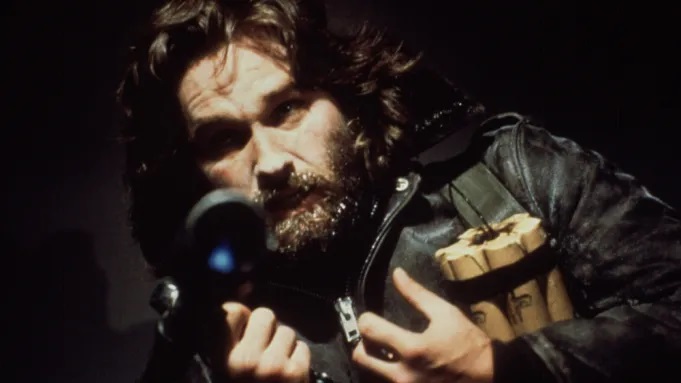The Thing (Carpenter, 1982)
To many horror enthusiasts, John Carpenter’s The Thing (1982) is considered one of the classics due to the practical effects and ominous music used throughout the movie, however, many older individuals and critics often oppose this categorization of this film, saying there is no purpose for the gruesome details shown on the screen. I believe The Thing belongs with the classics simply because I find it to be a very entertaining movie with the practical effects, and the suspense brought on by subtle scenes, as well as the music many other individuals have praised in separate reviews.
This is a review in response to Roger Ebert’s critique of John Carpenter’s The Thing (1982). Ebert’s main issues with this film stem from the lack of personality displayed by the characters themselves as well as their actions while dealing with the Thing throughout the movie. He claims that Carpenter isn’t very effective in giving the audience a connection with the characters seen on the screen. Unlike Ebert, and most likely many other individuals, I don’t personally believe the viewers need to have a clear understanding of all the characters and their values in this specific film. I do agree that the characters could have been introduced better or in a clearer manner overall. However, I believe the main purpose of this film isn’t to attach the viewers to the characters but rather to display the many uses and forms of practical effects as a display of more advanced technology during the time. As a horror fan, I appreciate tense movies with extreme gore or disgusting effects. I believe effects similar to that nature and especially like those seen in The Thing are effective in procuring genuine, interested, and even disgusted reactions out of sci-fi and horror fans, and it definitely brings authentic reactions out of those individuals that aren’t such enthusiasts for scenes or films of a grosser manner. I particularly enjoy The Thing due to the pure nastiness of the practical effects. Each time I rewatch the film, I recall how expressive the gory scenes are. Again, I believe several individuals will disagree with me when I say that sometimes I don’t want to get attached to characters but rather I just want to observe how a movie can piece itself together in viewers’ minds, through paranoia, disgust, and a worry of the unknown from both creatures and characters.
The other problem Ebert has with The Thing is, in his words, “plausibility,” otherwise understood as having logical reasoning. Ebert states that Carpenter enabling his characters to split up and dismiss traveling in pairs, creates an atmosphere with no fun because nobody, not even the viewers, can trust who is or isn’t the Thing. Ebert is upset that Carpenter has overlooked an obvious solution, which I can’t say isn’t understandable. Even so, I find myself relishing in the anxious atmosphere created by Carpenter. We, as viewers, understand the reasoning for the buddy system in this situation, yet it is obvious that more tension will be created between not only the characters themselves but also between the characters and the viewers. Nobody at all knows who is trustworthy. What Ebert would possibly claim as a mistake is something I find that, as a viewer, breeds stress and paranoia because I, and possibly other viewers, understand that splitting up isn’t a strong suggestion, which increases anxiety as the characters dig themselves deeper into a hole of mistrust and fear. Another element that promotes anxiety among viewers is the tone and pace of the subtle music. Roger Ebert doesn’t note the suspenseful aid of Ennio Morricone’s score as it provides an uneasy feeling accompanied by proper scene placement and music timing.
I say all of this having not yet watched the 1951 The Thing from Another World (Hawks and Nyby), nor having read The Thing: A Novel written by Alan Dean Foster and published in 1982. With this being said, I cannot provide a comparison of times or differences in versions between the films and the book. I can only provide my impression of the 1982 film version and what I have taken from Roger Ebert’s review regarding the 1951 version.
Ebert states that in John Carpenter’s The Thing, the characters and story become second in line with the practical effects and technology. Ebert’s reasoning for this is that due to the 1951 version, there is already a basis, and somewhat knowledge, of the characters and story. He concludes that the 1982 film version only holds purpose for individuals looking for gory and sickening scenes. I disagree with this because, as previously stated, I haven’t seen or read any prior or later versions of The Thing, and I still both understood and enjoyed the entirety of the film in a general sense. Ebert also states that the original 1951 version is the best version of the ideas, characters, plot, and overall materials of the film. Because of this, I believe that Roger Ebert and I were and have been shaped and conditioned to appreciate movies in different ways. I’ve come to see, through my own experiences, that older generations, typically around 60 years or older, tend to have a dislike for what they have deemed as “unnecessary” violence and gore.
Perhaps Ebert fits into that group or perhaps we are just from different ages in film regarding things of a more explicit nature. Although I understand most of Roger Ebert’s impressions of John Carpenter’s The Thing as well as his reasoning behind his claims, I disagree with his stance and rating of this classic film.

